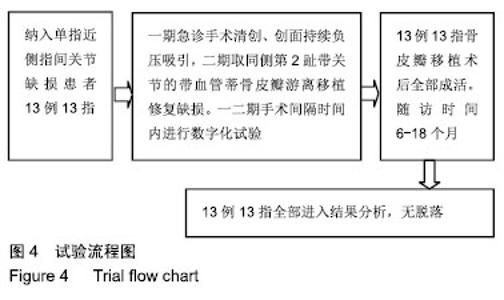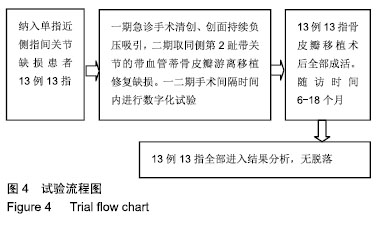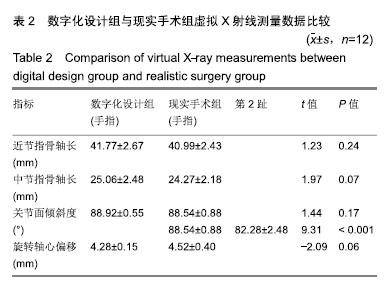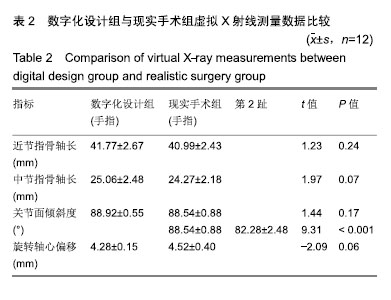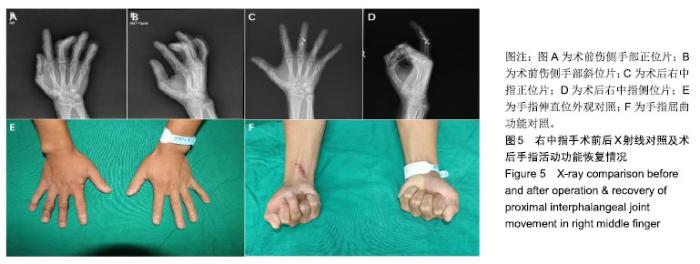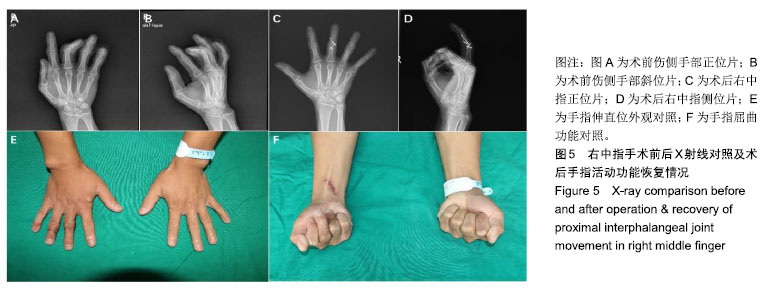| [1]Dautel G. Vascularized toe joint transfers to the hand for PIP or MCP reconstruction. Hand Surg Rehabil. 2018;37(6): 329-336.[2]Mathews AL, Burns PB, Chung KC. How rheumatoid arthritis patients make decisions regarding hand reconstruction: a qualitative study from the silicone arthroplasty in rheumatoid arthritis project. Plast Reconstr Surg. 2016;137(5): 1507-1514.[3]Squitieri L, Chung KC. A systematic review of outcomes and complications of vascularized toe joint transfer, silicone arthroplasty, and PyroCarbon arthroplasty for posttraumatic joint reconstruction of the finger. Plast Reconstr Surg. 2008; 121(5): 1697-1707.[4]Sun W, Chen C, Wang Z, et al. Full-length finger reconstruction for proximal amputation with expanded wraparound great toe flap and vascularized second toe joint. Ann Plast Surg. 2016;77(5): 539-546.[5]李卫,刘金伟,何藻鹏,等.改良第二跖趾关节移植修复木工机械致掌指关节背侧缺损[J]. 中华手外科杂志,2013, 29(3):167-169.[6]Bachleitner K, Blank B, Klein S, et al. Vascularized transfer of two coherent toe joints in simultaneously reconstructing MCP and PIP of a mutilated finger. Clin Hemorheol Microcirc. 2016; 64(3): 333-344.[7]吴建龙,谢庆平,唐林峰,等, 急诊Flow-through带关节的第二足趾复合组织瓣移植修复手指复合组织损伤[J].中华手外科杂志, 2018, 34(5): 322-325.[8]许靖,张国栋,谭海涛, 等.数字化设计结合3D打印技术在拇指再造中的应用[J].中国临床解剖学杂志,2015,33(5):541-544.[9]Hsu CC, et al. The impact of transferred vascularized toe joint length on motion arc of reconstructed finger proximal interphalangeal joints: a cadaveric study. J Hand Surg Eur. 2017;42(8): 789-793.[10]郑锋,陈宣煌,郑祖高,等.基于数字化设计和3D打印的胫骨高位导向截骨研究[J].河南科技大学学报(医学版), 2018,36(4): 253-256.[11]Xu J, He Z, Zhang G, et al. An experimental study on the digital precision of internal fixation via the sinus tarsi approach for calcaneal fractures. J Orthop Surg (Hong Kong). 2019; 27(1):2309499019834072.[12]张庆,刘丰春,陈忠恒.掌指骨的X线测量及相互间数学比例关系的临床应用研究[J].实用放射学杂志,2002,18(7):585-588.[13]刘铭波,李保龙,叶伟德,等.带皮瓣的第二跖趾及近侧趾间关节移植重建拇指掌指及指间关节缺损[J].中华显微外科杂志,2016, 39(5):420-423.[14]陈健,秉刚,饶从强.第二足趾关节移植治疗手部关节缺损的临床研究[J].中国医药科学, 2018, 8(5): 23-26.[15]黄耀鹏,王胜伟,王科杰,等.保留足趾的游离足二趾近侧趾间关节移植治疗创伤性指间关节炎[J].中华创伤杂志, 2016,32(10): 909-914.[16]潘生德,顾玉东,侍德.中华医学会手外科学会上肢部分功能评定试用标准[J].中华手外科杂志,2000,16(3):130.[17]Reissner L, Fischer G, List R, et al. Minimal detectable difference of the finger and wrist range of motion: comparison of goniometry and 3D motion analysis. J Orthop Surg Res. 2019;14(1): 173.[18]Lee SW, Ng ZY, Fogg QA. Three-dimensional analysis of the palmar plate and collateral ligaments at the proximal interphalangeal joint. J Hand Surg Eur. 2014;39(4): 391-397.[19]Podolsky D, Mainprize J, McMillan C, et al. Comparison of third toe joint cartilage thickness to that of the finger proximal interphalangeal (PIP) joint to determine suitability for transplantation in PIP joint reconstruction. J Hand Surg Am. 2011;36(12): 1950-1958.[20]Lin YT, Chen SH, Loh CYY, et al. Rationalizing the vascular anatomy for oblique osteotomy of the metatarsal head during toe/joint transfers of the metatarsophalangeal joint. Plast Reconstr Surg Glob Open. 2018; 6(10): e1805.[21]Pappalardo M, Laurence VG, Lin YT. Chimeric free vascularized metatarsophalangeal joint with toe fillet flap: a technique for reconstruction of the posttraumatic metacarpophalangeal joint with concomitant soft tissue defect. J Hand Surg Am. 2018;43(2): 193.e1-193.e6.[22]Foucher G, Lenoble E, Smith D. Free and island vascularized joint transfer for proximal interphalangeal reconstruction: a series of 27 cases. J Hand Surg Am.1994;19(1):8-16.[23]Tsubokawa N, Yoshizu T, Maki Y. Long-term results of free vascularized second toe joint transfers to finger proximal interphalangeal joints. J Hand Surg Am. 2003;28(3):443-447.[24]Katz RD, Higgins JP. Microvascular Toe Joint for Proximal Interphalangeal Joint Replacement: Indications, Technique, and Outcomes. Hand Clin. 2018;34(2): 207-216.[25]Mohan R, Wong VW, Higgins JP, et al. Proximalization of the vascularized toe joint in finger proximal interphalangeal joint reconstruction: a technique to derive optimal flexion from a joint with expected limited motion. J Hand Surg Am. 2017; 42(2): e125-e132.[26]Loh CY, Hsu CC, Lin CH, et al. Customizing extensor reconstruction in vascularized toe joint transfers to finger proximal interphalangeal joints: a strategic approach for correcting extensor lag. Plast Reconstr Surg. 2017; 139(4): 915-922.[27]Chen HY, Lin YT, Lo S, et al. Vascularised toe proximal interphalangeal joint transfer in posttraumatic finger joint reconstruction: the effect of skin paddle design on extensor lag. J Plast Reconstr Aesthet Surg. 2014;67(1): 56-62.[28]Lam WL, Waughlock N, Hsu CC, et al. Improving the extensor lag and range of motion following free vascularized joint transfer to the proximal interphalangeal joint: Part 2. A clinical series. Plast Reconstr Surg. 2013;132(2): 271e-280e.[29]莫勇军,谭海涛,杨克勤,等.3D技术在足趾微型皮瓣移植修复拇和手指缺损的应用[J].中华显微外科杂志,2013,38(3):294-297.[30]Sollaccio DR, Navo P, Ghiassi A, et al. Evaluation of articular surface similarity of hemi-hamate grafts and proximal middle phalanx morphology: a 3d geometric morphometric approach. J Hand Surg Am. 2019;44(2): 121-128.[31]Wang ZT, Zheng YM, Zhu L, et al. Exploring new frontiers of microsurgery: from anatomy to clinical methods. Clin Plast Surg. 2017;44(2): 211-231. |
